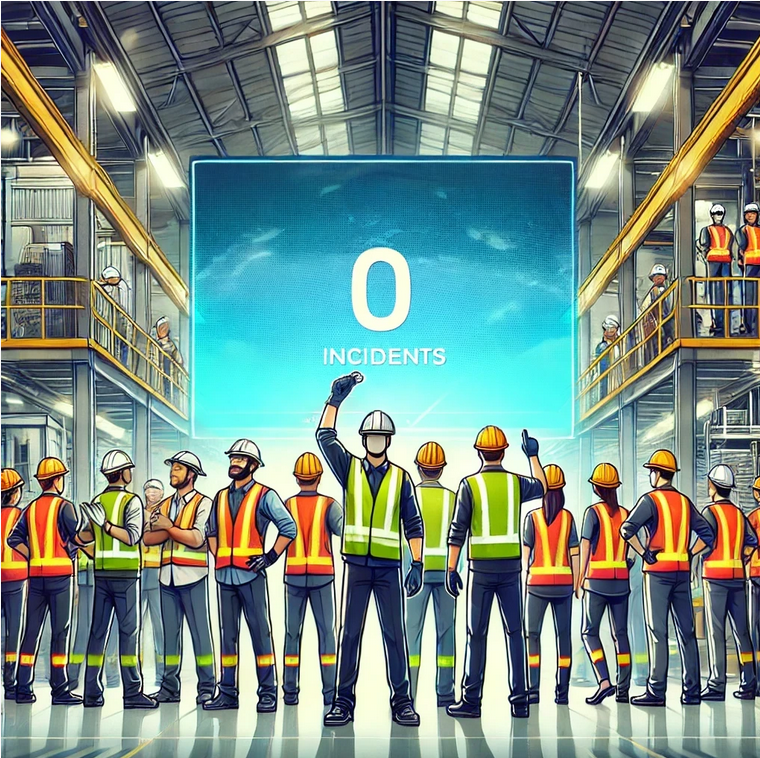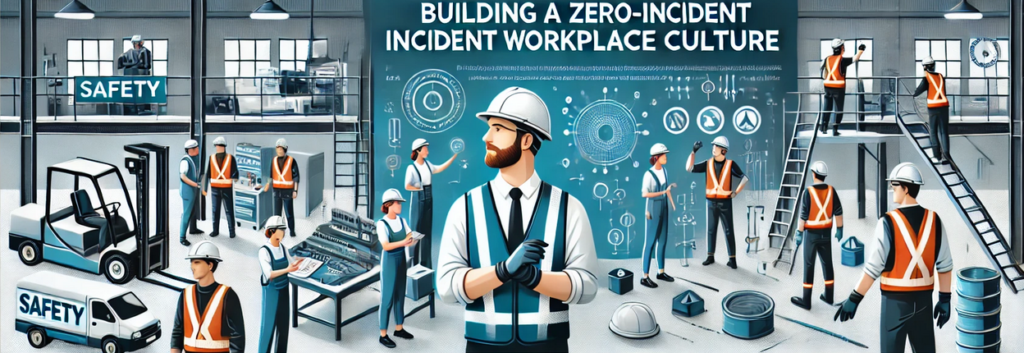A zero-incident workplace culture aims to create an environment where safety is the highest priority, and incidents, injuries, and near-misses are eliminated.
This culture isn’t built overnight; it requires a commitment from leadership, collaboration across teams, and the establishment of effective policies, training, and communication strategies.

By fostering a zero-incident mindset, organizations can protect employees, improve productivity, and reduce costs associated with workplace accidents.
This article explores the key steps and strategies for building a zero-incident workplace culture, addressing challenges and providing actionable guidance.
Why Zero-Incident Cultures Matter
Workplace incidents not only jeopardize the safety and well-being of employees but also lead to financial losses, damaged reputations, and potential legal consequences.
Adopting a zero-incident approach demonstrates an organization’s commitment to safety, reduces turnover by boosting employee morale, and ensures compliance with occupational health and safety regulations.
Key benefits include:
- Improved employee morale: Workers feel valued and secure.
- Reduced costs: Preventing accidents saves money on medical expenses, workers’ compensation, and lost productivity.
- Enhanced reputation: Organizations with strong safety records are more attractive to clients and potential hires.
The Foundations of a Zero-Incident Workplace Culture
Creating a zero-incident culture begins with a solid foundation of policies, leadership involvement, and employee engagement.
Here are the key components:
1. Leadership Commitment
Leaders play a pivotal role in shaping workplace culture. When senior management prioritizes safety and leads by example, employees are more likely to follow suit.
- Set clear safety goals and communicate them across all levels of the organization.
- Allocate resources for safety programs, training, and equipment.
- Regularly review and revise safety policies to address emerging risks.
2. Employee Engagement
Employees must feel empowered to participate in safety initiatives. A zero-incident culture thrives when workers take ownership of their safety and the safety of their colleagues.
- Encourage employees to report hazards, near-misses, and unsafe practices without fear of retaliation.
- Involve workers in safety committees and decision-making processes.
- Recognize and reward employees who demonstrate a commitment to safety.
3. Comprehensive Training
Education is a cornerstone of any safety program. Training ensures that employees understand their roles, responsibilities, and the proper use of equipment and procedures.
- Provide regular safety training tailored to specific roles and tasks.
- Conduct refresher courses to reinforce safety practices and address new risks.
- Offer hands-on training sessions, such as emergency drills and equipment handling.
Strategies for Achieving a Zero-Incident Culture
Achieving zero incidents requires a combination of proactive measures, ongoing evaluation, and a strong safety-first mindset.
Below are practical strategies to implement:
1. Conduct Regular Risk Assessments
Identifying potential hazards is the first step in preventing incidents. Regular risk assessments help organizations stay ahead of risks and take corrective action.
- Inspect workplaces for physical, chemical, and ergonomic hazards.
- Evaluate the effectiveness of existing safety controls.
- Update risk assessments whenever new processes or equipment are introduced.
2. Establish Clear Safety Procedures
Detailed and easily accessible safety procedures ensure employees know how to perform tasks safely.
- Develop standard operating procedures (SOPs) for high-risk tasks.
- Use visual aids, such as signs and diagrams, to reinforce key safety messages.
- Provide multilingual resources for diverse workforces.
3. Promote a Reporting Culture
Encourage employees to report incidents, near-misses, and unsafe conditions promptly.
- Implement an anonymous reporting system to remove barriers to reporting.
- Use incident reports to identify patterns and develop preventive measures.
- Share lessons learned from incidents to prevent recurrence.
4. Leverage Technology
Modern tools can enhance workplace safety and streamline processes.
- Use wearable devices to monitor workers in hazardous environments.
- Implement safety management software to track incidents, inspections, and corrective actions.
- Deploy automated alerts for real-time hazard detection, such as gas leaks or equipment malfunctions.
5. Foster Open Communication
Transparent communication is essential for building trust and ensuring that safety remains a priority.
- Hold regular safety meetings to discuss updates, concerns, and progress toward safety goals.
- Encourage two-way communication, allowing employees to voice their concerns and suggestions.
- Share safety performance metrics to keep everyone informed and motivated.
6. Recognize and Celebrate Success
Acknowledging safety achievements reinforces positive behaviors and motivates employees to stay vigilant.
- Celebrate milestones, such as incident-free days or safety improvements.
- Offer incentives, such as bonuses or gift cards, for teams that excel in safety practices.
- Highlight success stories in newsletters, meetings, or bulletin boards.
Overcoming Challenges in Building a Zero-Incident Culture
While the benefits of a zero-incident culture are clear, organizations may face challenges along the way.

Here’s how to address common obstacles:
- Resistance to Change: Some employees may resist new safety initiatives. Overcome this by explaining the importance of safety and involving workers in decision-making.
- Complacency: Long periods without incidents can lead to complacency. Prevent this by maintaining regular safety training and emphasizing vigilance.
- Resource Constraints: Limited budgets can hinder safety improvements. Prioritize high-impact measures and explore cost-effective solutions, such as online training programs.

Measuring Progress Toward Zero Incidents
Tracking and analyzing safety performance is essential for maintaining momentum.
Key performance indicators (KPIs) to monitor include:
- Incident Rates: Track the frequency of workplace injuries and near-misses.
- Employee Participation: Measure engagement in safety training, reporting, and committees.
- Corrective Actions: Monitor the completion of safety improvements and the resolution of identified hazards.
Regularly review these metrics and adjust strategies as needed to ensure continuous improvement.
Conclusion
Building a zero-incident workplace culture is a journey that requires dedication, collaboration, and adaptability.
By prioritizing safety at every level of the organization, empowering employees, and implementing proactive strategies, businesses can create an environment where everyone goes home safe at the end of the day.
A zero-incident culture isn’t just a goal—it’s a commitment to protecting the most valuable asset of any organization: its people.
Before You Set Your Goal of Zero Incidents, Consider This

No comments yet